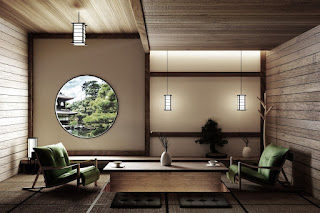Asian-Inspired Furniture Plans for Serenity and Simplicity
Asian-Inspired Furniture Plans for Serenity and Simplicity
The pursuit of serenity and simplicity is a universal desire, and Asian design philosophies offer a rich tapestry of inspiration for achieving this in our homes. Characterized by clean lines, natural materials, and a mindful approach to functionality, Asian-inspired furniture provides a pathway to a more peaceful and aesthetically pleasing living space. This article explores the key principles of Asian design and offers detailed plans for crafting several pieces that embody this calming aesthetic.
Understanding the Principles of Asian Design
Before embarking on furniture creation, it's crucial to understand the underlying principles that define Asian design aesthetics. This is not about mere imitation but about embracing the spirit of these philosophies to achieve a harmonious and tranquil ambiance.
Wabi-Sabi: Embracing Imperfection
Wabi-sabi, a Japanese aesthetic, celebrates the beauty of imperfection and impermanence. It values naturalness, asymmetry, and the passage of time. In furniture design, this translates to embracing the unique character of natural materials, such as wood with knots and variations in grain. Avoid striving for perfect uniformity; instead, let the natural beauty of the materials shine through. Distressed finishes can also effectively reflect this philosophy.
Minimalism and Functionality: Less is More
Minimalism is a cornerstone of many Asian design styles. The focus is on essential elements, eliminating clutter and maximizing functionality. Each piece of furniture should serve a clear purpose, and unnecessary ornamentation should be avoided. Clean lines and simple forms are paramount.
Natural Materials and Earth Tones: Connecting with Nature
The use of natural materials is fundamental. Bamboo, rattan, teak, and other sustainably sourced woods are favored for their inherent beauty and connection to the natural world. Color palettes often feature earth tones – browns, greens, creams, and muted blues – creating a calming and soothing environment.
Balance and Harmony: Yin and Yang
The concept of Yin and Yang, representing opposing yet complementary forces, influences the placement and design of furniture. Balance is achieved not through symmetry but through a harmonious interplay of contrasting elements. A low, wide piece of furniture might be balanced by a tall, slender one, creating visual equilibrium.
Furniture Plans: Embracing Asian Aesthetics
The following plans offer guidance on crafting furniture pieces that embody the principles of Asian design. These are simplified plans and may require adjustments based on your skill level and available materials.
A Simple Low Table
Materials:
- Teak wood planks (approximately 1-inch thick)
- Wood glue
- Wood screws
- Sandpaper
- Wood finish (e.g., natural oil)
Construction:
- Cut teak planks to desired dimensions for the tabletop and legs.
- Assemble the tabletop by joining the planks end-to-end, using wood glue and screws. Ensure even spacing between the planks to showcase the natural wood grain.
- Attach the legs to the underside of the tabletop, using wood glue and screws. The legs can be simple, straight pieces, reflecting minimalist principles.
- Sand the entire table smooth, paying attention to the edges and corners.
- Apply a natural oil finish to protect and enhance the wood's natural beauty.
A Rattan Hanging Chair
Materials:
- Rattan
- Strong rope or chain
- Foam padding (optional)
- Fabric for cushion (optional)
Construction:
This project requires more advanced weaving skills. Detailed instructions for constructing a rattan hanging chair are beyond the scope of this article but numerous tutorials are available online. The key is to utilize the natural flexibility and strength of rattan to create a comfortable and visually appealing hanging seat. Consider adding a comfortable cushion for enhanced relaxation.
A Bamboo Bookshelf
Materials:
- Bamboo poles of varying diameters
- Strong rope or twine
- Wood glue
- Screws (optional, for added stability)
Construction:
- Cut bamboo poles to the desired lengths for the frame and shelves.
- Construct the frame by joining the bamboo poles using strong rope or twine, tightly binding them together at the joints. You can use wood glue for added strength.
- Attach the bamboo shelves to the frame using the same methods. Ensure the shelves are level and securely fastened.
- Optional: For added stability, you can use small screws to reinforce the joints.
A Minimalist Headboard
Materials:
- Solid wood plank (e.g., teak or oak)
- Sandpaper
- Wood stain or finish
Construction:
- Cut the wood plank to the desired length and width for your headboard.
- Sand the plank smooth to remove any imperfections.
- Apply a wood stain or finish, selecting a color that complements your bedroom's overall aesthetic.
- Attach the headboard to the wall using appropriate hardware. Keep the design simple and uncluttered.
Conclusion
Creating Asian-inspired furniture offers a rewarding journey of crafting beautiful and functional pieces that promote serenity and simplicity. By understanding the core principles of Asian design philosophies and carefully selecting natural materials, you can transform your living space into a haven of tranquility and aesthetic pleasure. Remember to prioritize craftsmanship, mindful selection of materials, and an appreciation for the inherent beauty of imperfection to truly capture the essence of these calming designs.
These plans offer a starting point; feel free to adapt them based on your personal preferences and skill level. The most important aspect is to imbue your creations with intention and a focus on achieving harmony and balance within your living space.


0 comments:
Post a Comment
Note: Only a member of this blog may post a comment.